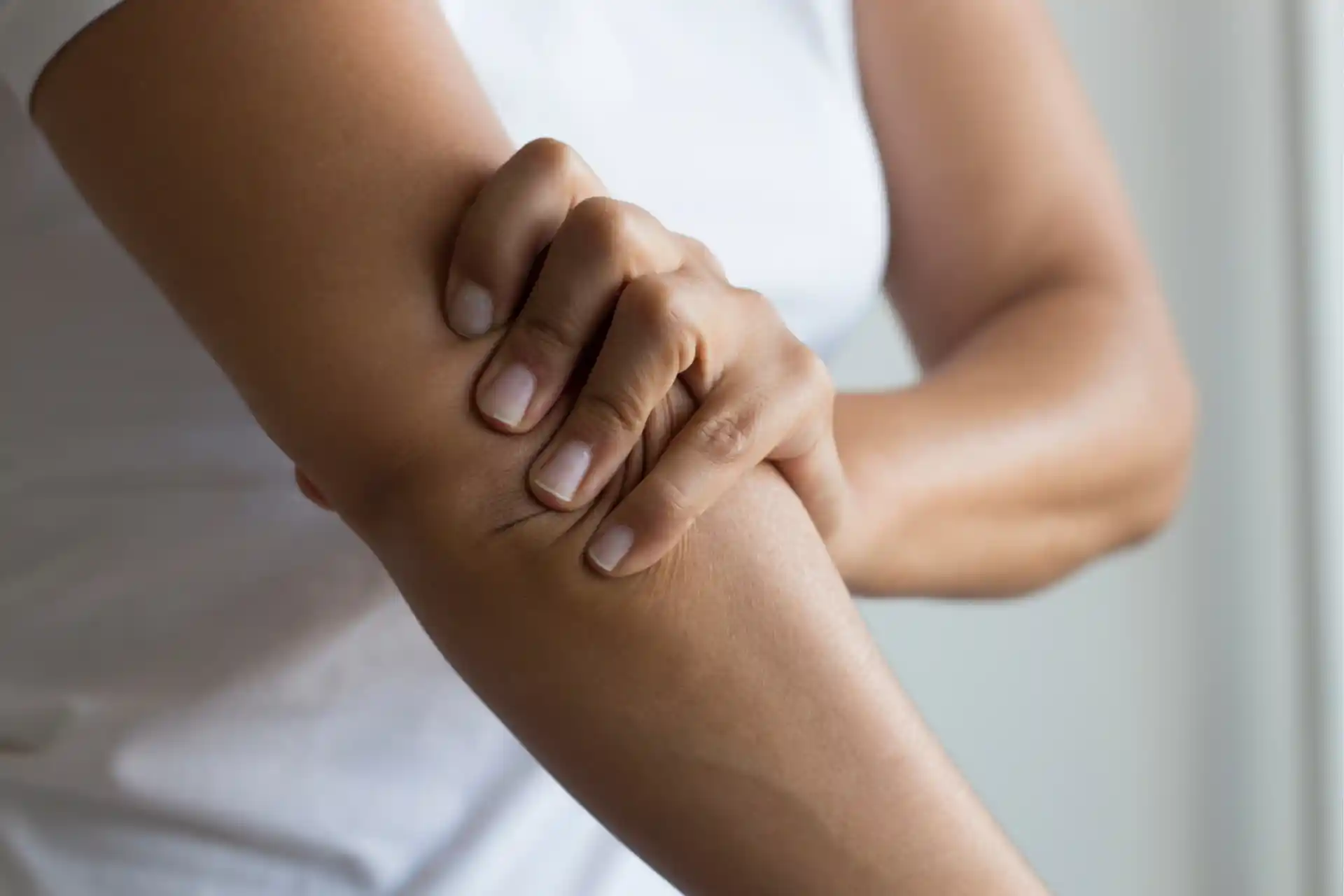Rotator cuff injuries are the leading cause of shoulder pain and shoulder-related disability accounting for 4.5 million physician visits in the United States annually.1 Made up of four muscles and their tendons encircling the shoulder joint, the rotator cuff enables a variety of arm movements. Early diagnosis and treatment are crucial to prevent further injury and enhance recovery.
This article outlines three easy methods of how to test for rotator cuff injuries at home.
These techniques are not a substitute for medical care; consult a doctor immediately if the pain is severe or if shoulder movement is impaired, and ask your doctor before trying any of these methods.
- Tendonitis - Inflammation of the rotator cuff tendons, generally caused by chronic overuse.
- Bursitis - Inflammation or irritation of the bursa, a fluid-filled sac that reduces a joint's internal friction. Often caused by compression or direct trauma to the shoulder.
- Rotator Cuff Tears - A partial or full tear in the shoulder tendon or muscle, caused by an abrupt injury or as a result of repetitive motion. Untreated tendonitis and impingement can also lead to a rotator cuff tear.
- Shoulder Impingement - A condition where the tendons and/or the bursa become compressed or "impinged" as they pass through the narrow space between the bones of the shoulder. Often associated with repetitive overhead activities, poor posture, or anatomic abnormalities in the shoulder.
Subacromial impingement syndrome (SIS) is one of the most common causes of shoulder pain.
Rotator cuff injuries often present with pain when raising or moving your arm, weakness, and reduced mobility in the shoulder. In extreme cases, usually with rotator cuff tears, the pain can be severe and loss of motion may occur.
Note that these symptoms are not unique to rotator cuff injuries and may indicate other upper body injuries, such as osteoarthritis, joint dislocations, or bone fractures. Consult your doctor for an accurate diagnosis of a rotator cuff injury.
How To Test for Rotator Cuff Injuries At Home
.jpg)
Below are some simple tests to help identify common rotator cuff injuries.3,4
Make sure to consult your doctor before attempting these tests. This information is provided as educational options for those interested in learning how to test for rotator cuff injuries, but should be followed with the supervision and consent of a healthcare professional.
1. Lateral Jobe Test
One of the most reliable tests to detect tears in the supraspinatus muscle, which is situated on top of the rotator cuff, and one of the most prone to tearing during injury. This test requires an assistant.
- Begin with sitting or standing.
- Extend the injured arm straight out to 90 degrees, with assistance if needed.
- Rotate the arm so the palm faces backward and the thumb points down.
- Have the assistant apply gentle downward pressure on the arm while you resist.
- Pain or weakness in applying resistance suggests a possible rotator cuff tear.
2. Lift Off Test
This test assesses for tears in the subscapularis muscle, the rotator cuff muscle on the front of the shoulder blade. This test requires an assistant.
- Begin with sitting or standing.
- Place the back of your hand against the small of your back.
- Attempt to lift your hand away from your back.
- Pain or weakness when trying to lift your hand off your back suggest a possible rotator cuff tear.
3. Neer’s Test
This test is commonly used to identify possible subacromial impingement syndrome (SIS). This test requires an assistant.
- Begin with sitting or standing.
- Have the assistant stand behind you and put a hand firmly on top of the injured shoulder.
- Rotate your arm internally, turning the thumb downward and your palm facing outwards.
- The assistant will grasp your arm near the elbow, and with your arm still rotated, the assistant will slowly lift your arm forward until it is fully overhead or until you experience pain.
- Pain during this range of motion may indicate a shoulder impingement.
These tests are helpful for understanding shoulder pain, but they're not a substitute for treatment.
If you think you have a torn rotator cuff or any other shoulder injury, seek professional treatment to avoid potential complications that could arise from untreated shoulder issues that could lead to a chronic shoulder condition.
Treatment & Recovery
The severity of the rotator cuff injury will determine the type of treatment needed. For minor injuries, rest, ice, medication and physical therapy may help heal the injury.
However, for more severe cases of rotator cuff injuries such as a rotator cuff tear, surgery is often required to reattach the torn tendon. Unfortunately, even after full recovery, post-surgical chronic pain and stiffness are common, often due to the formation of scar tissue in the surrounding soft tissues, also known as fascia.
RELIEF® specializes in addressing post-surgical chronic pain and discomfort caused by rotator cuff tears and fascia scarring. Our innovative treatment addresses fascia by utilizing hydrodissection and growth proteins, without the need for medication, surgery, steroids, or sedation.
If you’re considering RELIEF® for yourself or a loved one dealing with chronic shoulder pain, contact us to learn more.




.jpg)

.svg)